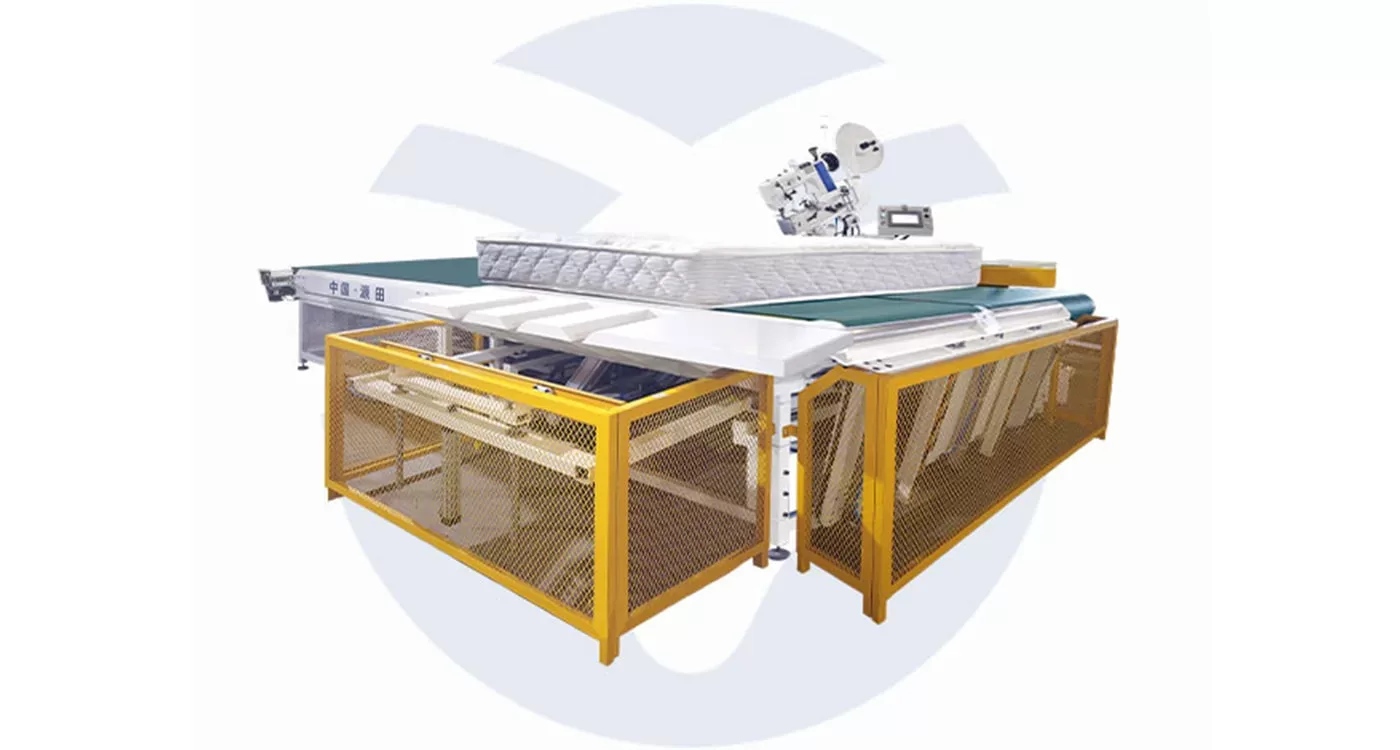- Home » How to Reduce Fabric Waste with Efficient Tape Edge Machine Settings
In the textile and mattress manufacturing industries, minimizing fabric waste is both an economic and environmental priority. Among the key tools in this effort are tape edge machines, widely used for finishing mattress edges and other textile products.
By optimizing their settings, manufacturers can significantly reduce waste while maintaining high-quality output. This article explores practical strategies to achieve efficient tape edge machine settings, ensuring a balance between cost-effectiveness, environmental sustainability, and product quality.
Understanding Tape Edge Machines
Tape edge machines are specialized sewing machines designed specifically to stitch the edges of mattresses and similar products. They apply a tape or border material to encase and secure the edges, providing a clean, finished appearance while improving durability. These machines come in various configurations, from manual to fully automated systems, and are designed with adjustable settings for speed, tension, and material handling.
The operational efficiency of tape edge machines has a direct impact on fabric usage. Poorly adjusted settings can lead to excessive trimming, uneven stitching, or material wastage, all of which contribute to higher production costs and environmental impact.

The Importance of Reducing Fabric Waste
Fabric waste not only inflates manufacturing costs but also poses significant environmental concerns. The global textile industry is one of the leading contributors to waste and pollution, with millions of tons of fabric discarded annually. By minimizing waste, manufacturers can decrease the amount that goes to landfills, preserve resources, and appeal to the growing consumer demand for sustainability.
Reducing fabric waste also enhances profitability. Even small reductions in material usage can lead to substantial savings over time, particularly in large-scale operations. By focusing on efficient machine settings, manufacturers can strike a balance between cost savings and sustainable production.
Optimizing Tape Edge Machine Settings
The operation of a tape edge machine requires the right blend of technical knowledge, attention to detail, and frequent maintenance. Below are key strategies for optimizing machine settings with minimal fabric waste.
Calibrate Tension Settings
Perhaps one of the most important aspects of tape edge machine performance has to do with thread and tape tension. Incorrect tension leads to puckering, loose stitches, or uneven tape application, which often means material wastage.
Regular calibration ensures that thread tension is adequate to provide secure stitches but does not unduly tend to gather or distort the fabric. Tape tension allows for smooth feeding without over-stretching or underutilizing the tape material. Manufacturers should test tension settings on sample material before proceeding to full production runs.
Optimize Stitch Length and Speed
Stitch length and machine speed are two of the most important factors that will affect fabric consumption and the quality of the finished product. Short stitches may overconsume thread and also increase production time, while excessively long stitches can compromise seam strength. Applying these settings to the properties of the material and its intended use can help to minimize waste and maximize efficiency.
Use Precise Material Guides
Material guides are important in the proper alignment of fabric and tape while sewing. Incorrect alignment results in uneven stitching, with most of the errors needing rework or trimming, two activities producing waste. It is important to invest in good quality guides and regularly check them for wear and tear. The more accurate guides minimize the likelihood of misalignment, hence using only what is required in the material.
Maintain Sharp Cutting Blades
Tape edge machines often include cutting mechanisms to trim excess fabric and tape during operation. Dull or poorly adjusted blades can cause uneven cuts, leading to additional waste or necessitating repairs. Regularly sharpening or replacing blades helps ensure clean, precise cuts and reduces material loss.
Choose the Right Tape and Thread
The type and quality of tape and thread within the machine also affect fabric usage. Low-quality materials may break frequently or require adjustments that result in waste. Select tape with consistent width and elasticity to minimize adjustments, and use high-quality thread that’s compatible with the material being sewn, reducing the chance of breakage or rework.
Conduct Regular Maintenance
Well-maintained machines are more reliable, perform with fewer errors, and therefore produce less material waste. A typical proactive maintenance schedule would include lubrication of friction areas to reduce wear and tear, checking for loose or ill-aligned parts, and regular cleaning of the machine to prevent fabric build-up that could affect its performance. Keeping tape edge machines at an optimum keeps manufacturers from experiencing lost time along with costly material wastage.

Leveraging Technology for Waste Reduction
Advancements in machine technology create more opportunities to reduce fabric waste further. Automation and digital controls feature on many modern tape edge machines, enhancing precision and efficiency. Programmable settings, material sensors, and error detection are some of the features that help manufacturers enhance operations, thus reducing waste.
Reducing fabric waste is an ongoing process that requires regular monitoring and evaluation. Manufacturing should keep track of the major indicators, including material usage, waste rates, and production efficiency, in order to pinpoint areas that need improvement. Analyze this information to further refine machine settings, update training programs, and investigate new technologies.
Conclusion
Efficient tape edge machine settings play a vital role in reducing fabric waste, enhancing sustainability, and improving profitability. By focusing on key areas such as tension calibration, stitch optimization, and regular maintenance, manufacturers can achieve significant material savings without compromising quality.
Связанные с ними товары

















